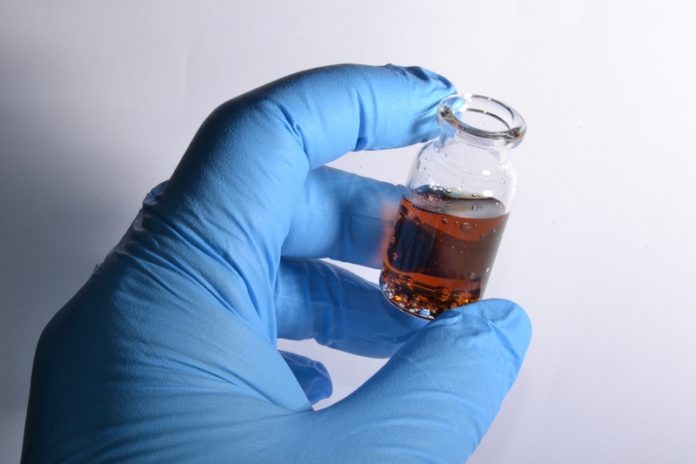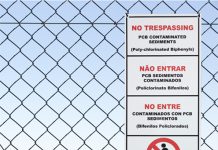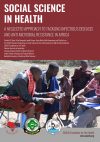Open Access Government details the work of the National Toxicology Program, a world leader in providing scientific information to help evaluate and better understand the potential health effects of exposure to chemicals and other substances
The National Toxicology Program is a world leader in providing scientific information to help evaluate and better understand the potential health effects of exposure to chemicals and other substances.
The National Toxicology Program (NTP) was established in 1978 to strengthen the science base in toxicology, support the development of improved testing methods and provide information about potentially toxic chemicals to health and research agencies, scientific and medical professionals and the public.
Based at the National Institute of Environmental Health Sciences (NIEHS) in North Carolina, the NTP coordinates toxicology and testing across the US Department of Health and Human Services.
Over the years, it has become a world leader in the development of techniques and testing regimes to evaluate the health-related effects of environmental and occupational substances. This includes short and long-term toxicology/carcinogenicity studies to address the gap in knowledge concerning the toxicity of substances in the environment, along with chemical disposition and toxicokinetic studies, which assess the absorption, distribution, metabolism and excretion of substances in laboratory animals.
The long-term goal of these studies is to gather data to better assess the structure-activity relationships that determine chemical disposition in the test subjects and, ultimately, better interpret the significance of this data to humans.
The NTP has also developed a range of genetic toxicology testing regimes to evaluate the potential of environmental and occupational substances to damage DNA, as well as toxicogenomic studies to examine how chemicals can change the expression of genes, proteins and metabolites in living cells. Measuring genome-wide changes in affected tissues can help to identify markers of toxicity or disease and improve understanding how genetic variations between individuals can influence their sensitivity to substances.
In addition, the NTP has established techniques for testing the potential of substances to affect the development of and cause damage to, reproductive organ systems and tests to determine the toxic effects of exposure on the immune and nervous systems.
In recent years, a key focus for the NTP has been the development of new, alternative methods of toxicology research that will reduce, replace or refine the use of laboratory animals. Systems currently under development include computer-based predictive toxicology models, genetically engineered in vitro cell systems, microchip array technology, non-mammalian species and transgenic species.
In March, at the Society of Toxicology’s 57th Annual Meeting and ToxExpo in San Antonio, Texas, the Interagency Coordinating Committee on the Validation of Alternative Methods (ICCVAM), a committee under the NTP Interagency Centre for the Evaluation of Alternative Toxicological Methods (NICEATM), continued the rollout of a strategic roadmap for establishing new methods to evaluate the safety of medical and chemical products while reducing or eliminating the need for animal testing.
The roadmap, which was drawn up with input from 16 federal agencies, multiple interagency work groups and the public, aims to create a framework to support the development of, foster confidence in and ensure the adoption of these new approach methodologies (NAMs). The implementation of the roadmap is currently focused on three areas: acute systemic toxicity; eye and skin irritation; and skin sensitisation.
Temporary, ad hoc work groups are playing a key role in implementation by undertaking specific tasks identified by the ICCVAM as being important for the development or validation of NAMs.
Chairs representing agencies that use or require data from an area of interest set their group’s scope and charge. Once approved by the ICCVAM, member agencies and partners from the International Cooperation on Alternative Test Methods (the European Union Reference Laboratory for Alternatives to Animal Testing, the Japanese Centre for the Evaluation of Alternative Methods, the Korean Centre for the Evaluation of Alternative Methods and Health Canada) are invited to participate.
The work groups will develop detailed implementation plans to meet the roadmap’s goals based on four key elements: definition of testing needs; identification of any available alternative tests and computer models; a plan to develop integrated approaches to testing and assessment and defined approaches for interpreting data; and a plan to address both scientific and non-scientific challenges, including regulatory issues such as international harmonisation.
“This roadmap represents a coordinated effort by federal government agencies to proactively develop and adopt new approaches to toxicity testing, rather than having changes driven by external influences”, says Warren Casey, PhD, director of the NTP Interagency Centre for the Evaluation of Alternative Toxicological Methods.
“If actionable progress in this area is going to happen, the agencies need to take the lead and that is exactly what they are doing with this roadmap.”
For more information, please visit https://ntp.niehs.nih.gov/
Open Access Government
JMiles@openaccessgovernment.org




























